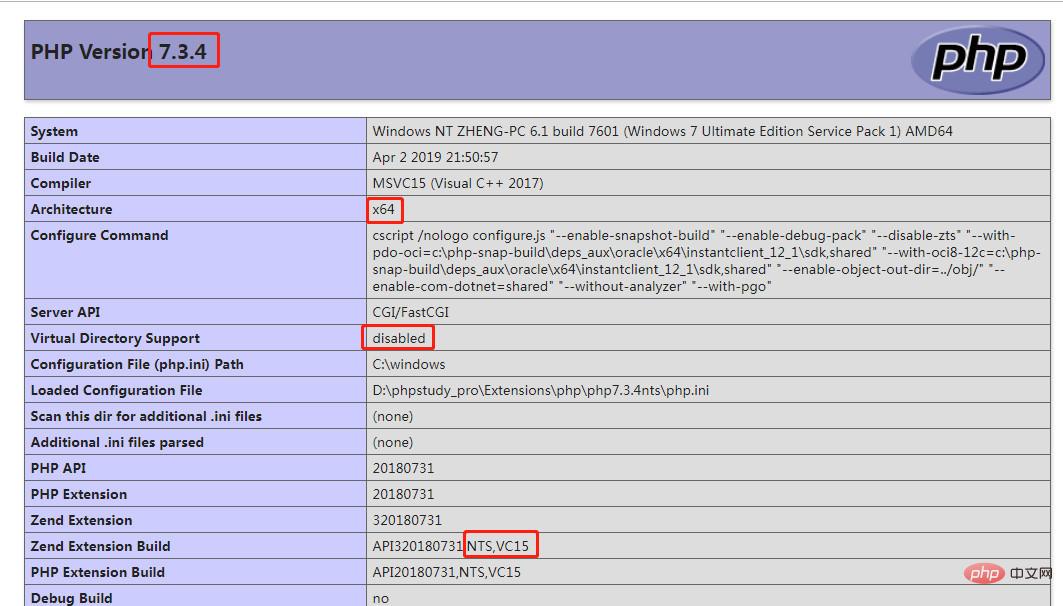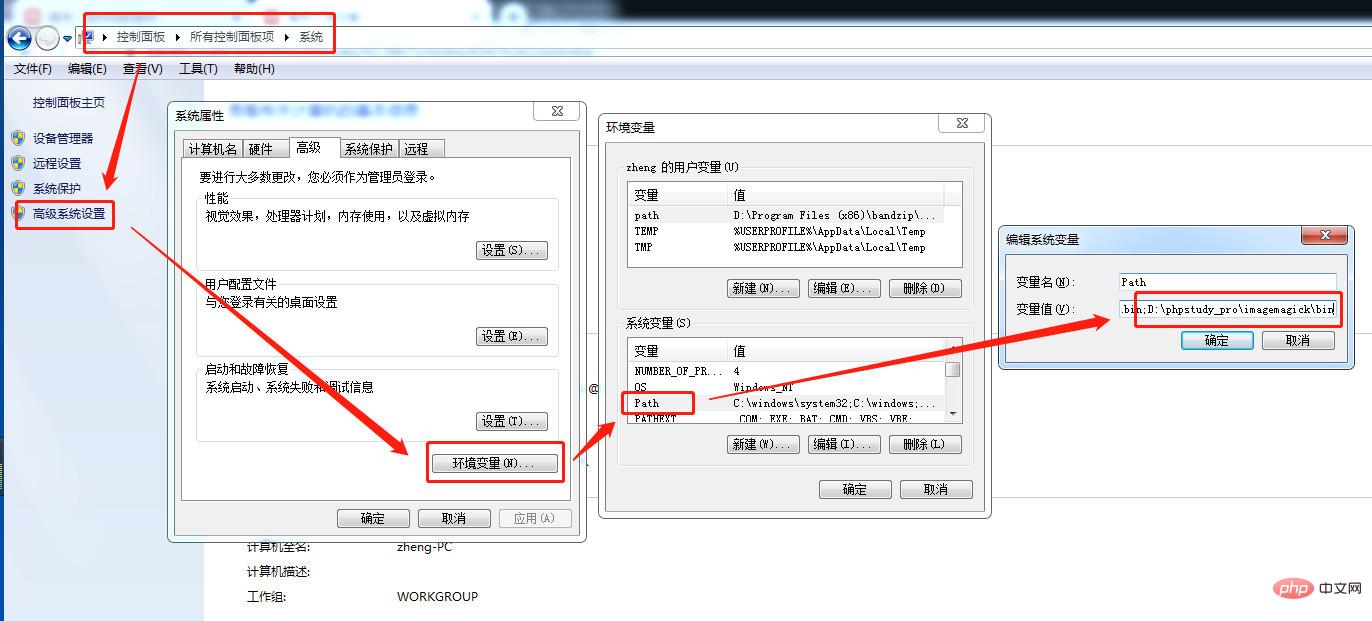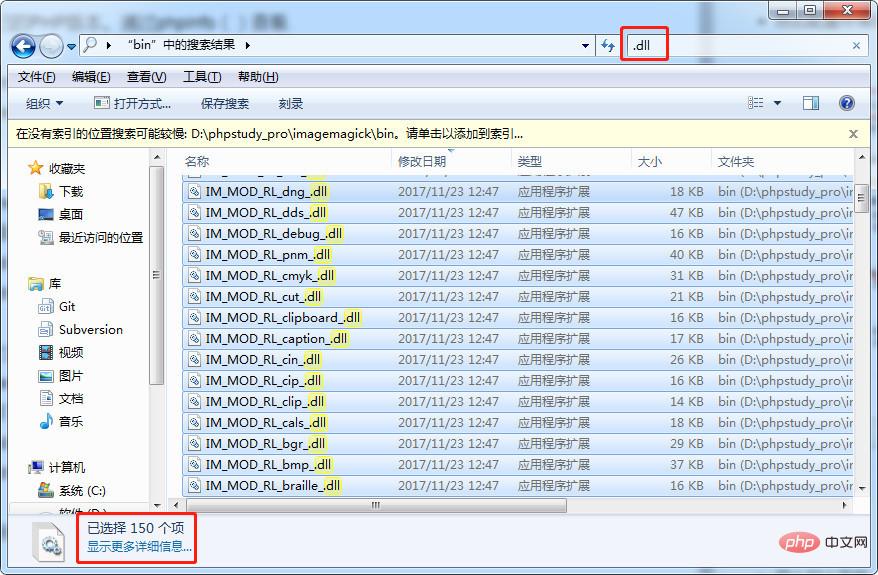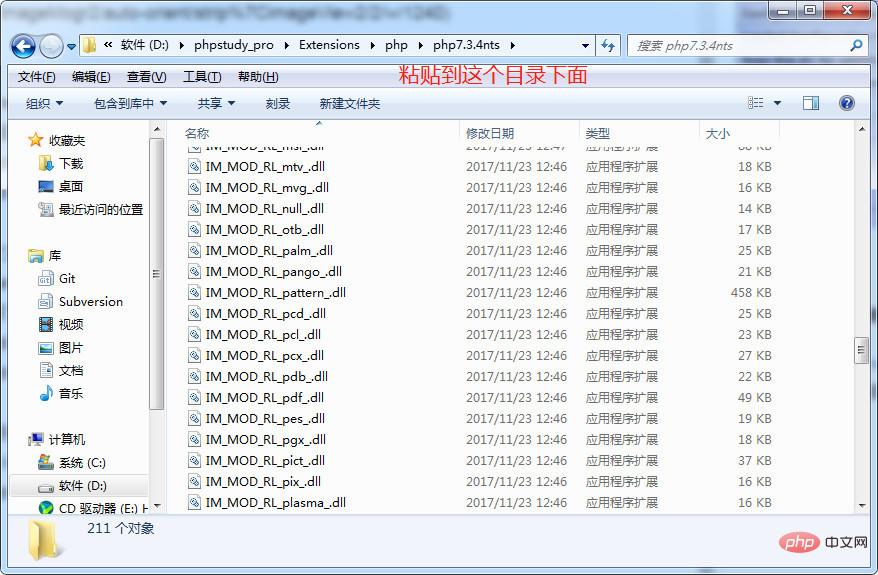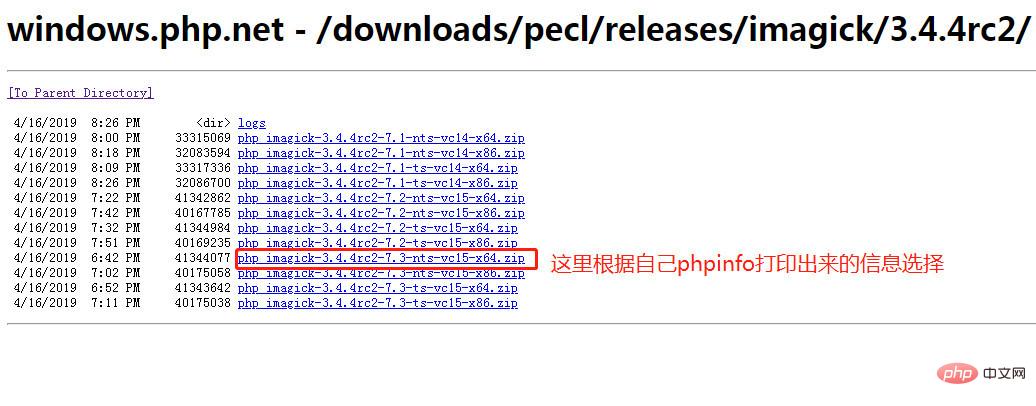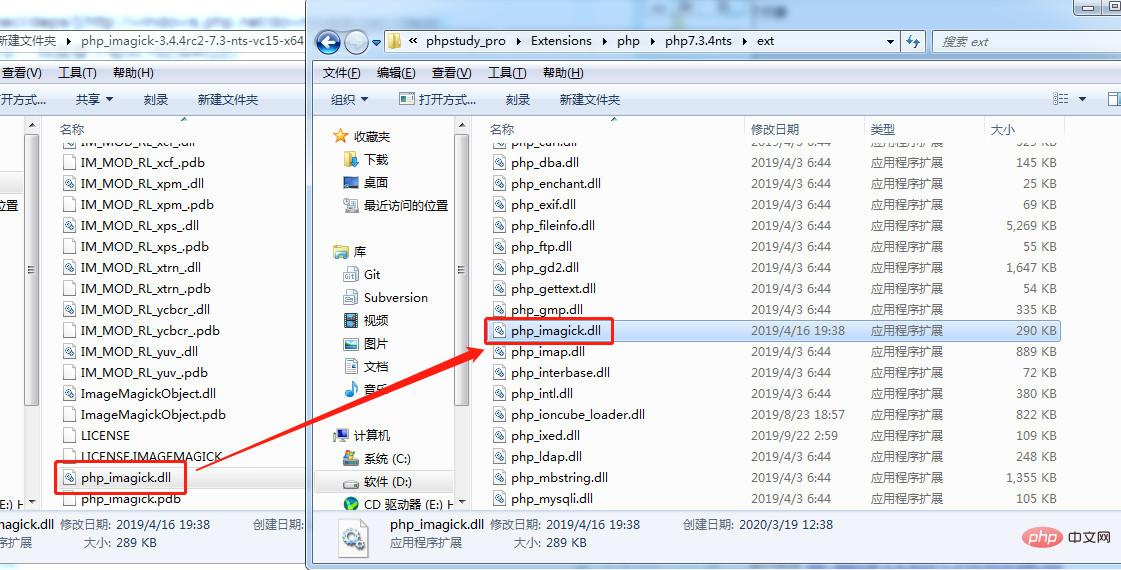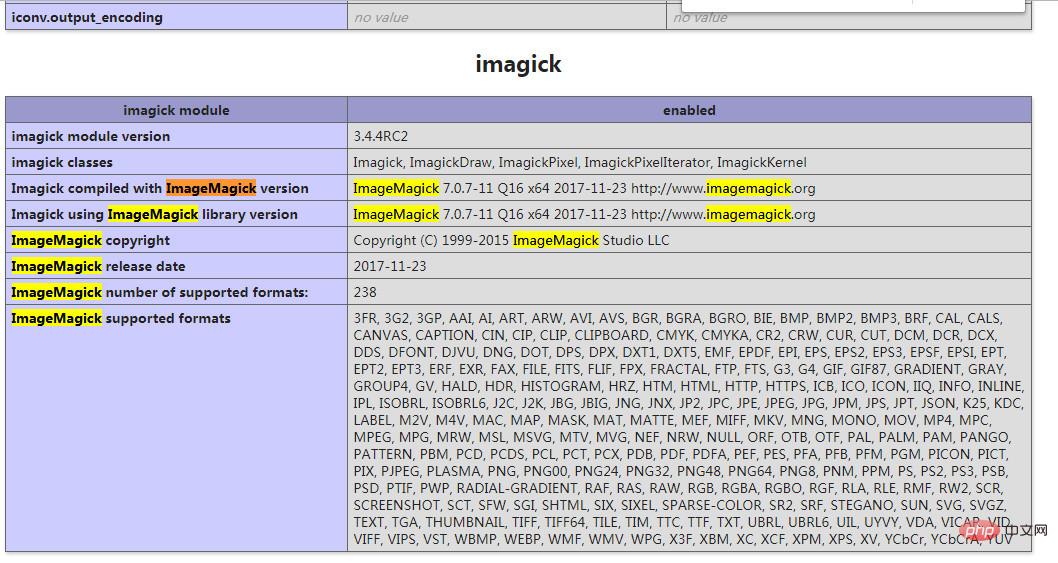 Operation and Maintenance
Operation and Maintenance
 Linux Operation and Maintenance
Linux Operation and Maintenance
 How to install ImageMagick and its php imagick extension under linux and windows
How to install ImageMagick and its php imagick extension under linux and windows
How to install ImageMagick and its php imagick extension under linux and windows

[Related article recommendations: linux tutorial]
First of all, you need to install two things, one is ImageMagick and the other is PHP Extend imagick
Linux installation
Install ImageMagick first
- Download the ImageMagick installation package
wget http://www.imagemagick.org/download/ImageMagick.tar.gz
Copy after login - Unzip
tar -xvfz ImageMagick.tar.gz
Copy after login - Enter the directory
cd ImageMagick-7.0.10-28
Copy after login - Set the installation path. You will need to use it later to install the php extension;/usr/local/imagemagick
./configure --prefix=/usr/local/imagemagick
Copy after login - Compile
make && make install
Copy after loginCopy after loginPHP imagick extension installation (second step)
Official website address: pecl.php.net/package/imagick - Download imagick-3.4.4
wget https://pecl.php.net/get/imagick-3.4.4.tgz
Copy after login - Unzip the installation package
tar -zxvf imagick-3.4.4.tgz
Copy after login - Enter the installation file
cd imagick-3.4.4.tgz/
Copy after login - Execute the phpize command
/usr/local/php/bin/phpize
Copy after login - The directory for ImageMagick 6.8 and above is /usr/local/include/ImageMagick-X, make a soft connection before configure
ln -s /usr/local/imagemagick/include/ImageMagick-7 /usr/local/imagemagick/include/ImageMagick
Copy after login - Execute configure configuration
./configure --with-php-config=/usr/local/php/bin/php-config --with-imagick=/usr/local/imagemagick
Copy after login - Compile
make && make install
Copy after loginCopy after login - php.ini and add imagick.so
extensions=imagick.so
Copy after login
Install under Windows
Original link
- To download the extension, you need to know your PHP version. After viewing the information in the red box through phpinfo(),

will be used to - Download the imagemagick program
Address: http://windows.php.net/downloads/pecl /deps/
Download the corresponding version in this area. Select the highest version. I need to download the 64-bit version of vc15
Install the imagemagick program
- Download this compressed package and put it in any drive letter. Note that the path should not contain Chinese or special characters. My phpstudy integrated environment is placed in
D:\phpstudy_pro\imagemagick. This can be placed arbitrarily. - Then configure the environment variables. Refer to the picture below

Import the DLL file
In the downloaded file, enter the bin directory. Then search for.dlland copy all the files to the root directory of PHP
Search - Select All - Copy
DoneDownload Imagick extension
Two download addresses are given here. If it does not work, please search again
Download address one: http://windows.php.net/downloads/pecl/releases/imagick/
Download address two: https://pecl.php.net/package/imagick
- After decompression, find the php_imagick.dll file at the bottom and copy it to the PHP root directory. The

- other
.DLLfiles in the ext directory will be the other.dllsuffixed files in theimagickdirectory after decompression. Copy and paste all the files into the php root directory -
##php.ini
file and open it for editing, add the lineextension=php_imagick.dllRestart the service

Related learning recommendations:linux video tutorial, php programming
The above is the detailed content of How to install ImageMagick and its php imagick extension under linux and windows. For more information, please follow other related articles on the PHP Chinese website!

Hot AI Tools

Undresser.AI Undress
AI-powered app for creating realistic nude photos

AI Clothes Remover
Online AI tool for removing clothes from photos.

Undress AI Tool
Undress images for free

Clothoff.io
AI clothes remover

Video Face Swap
Swap faces in any video effortlessly with our completely free AI face swap tool!

Hot Article

Hot Tools

Notepad++7.3.1
Easy-to-use and free code editor

SublimeText3 Chinese version
Chinese version, very easy to use

Zend Studio 13.0.1
Powerful PHP integrated development environment

Dreamweaver CS6
Visual web development tools

SublimeText3 Mac version
God-level code editing software (SublimeText3)

Hot Topics
 PHP and Python: Different Paradigms Explained
Apr 18, 2025 am 12:26 AM
PHP and Python: Different Paradigms Explained
Apr 18, 2025 am 12:26 AM
PHP is mainly procedural programming, but also supports object-oriented programming (OOP); Python supports a variety of paradigms, including OOP, functional and procedural programming. PHP is suitable for web development, and Python is suitable for a variety of applications such as data analysis and machine learning.
 Why Use PHP? Advantages and Benefits Explained
Apr 16, 2025 am 12:16 AM
Why Use PHP? Advantages and Benefits Explained
Apr 16, 2025 am 12:16 AM
The core benefits of PHP include ease of learning, strong web development support, rich libraries and frameworks, high performance and scalability, cross-platform compatibility, and cost-effectiveness. 1) Easy to learn and use, suitable for beginners; 2) Good integration with web servers and supports multiple databases; 3) Have powerful frameworks such as Laravel; 4) High performance can be achieved through optimization; 5) Support multiple operating systems; 6) Open source to reduce development costs.
 Choosing Between PHP and Python: A Guide
Apr 18, 2025 am 12:24 AM
Choosing Between PHP and Python: A Guide
Apr 18, 2025 am 12:24 AM
PHP is suitable for web development and rapid prototyping, and Python is suitable for data science and machine learning. 1.PHP is used for dynamic web development, with simple syntax and suitable for rapid development. 2. Python has concise syntax, is suitable for multiple fields, and has a strong library ecosystem.
 Linux Architecture: Unveiling the 5 Basic Components
Apr 20, 2025 am 12:04 AM
Linux Architecture: Unveiling the 5 Basic Components
Apr 20, 2025 am 12:04 AM
The five basic components of the Linux system are: 1. Kernel, 2. System library, 3. System utilities, 4. Graphical user interface, 5. Applications. The kernel manages hardware resources, the system library provides precompiled functions, system utilities are used for system management, the GUI provides visual interaction, and applications use these components to implement functions.
 PHP and Python: A Deep Dive into Their History
Apr 18, 2025 am 12:25 AM
PHP and Python: A Deep Dive into Their History
Apr 18, 2025 am 12:25 AM
PHP originated in 1994 and was developed by RasmusLerdorf. It was originally used to track website visitors and gradually evolved into a server-side scripting language and was widely used in web development. Python was developed by Guidovan Rossum in the late 1980s and was first released in 1991. It emphasizes code readability and simplicity, and is suitable for scientific computing, data analysis and other fields.
 PHP: An Introduction to the Server-Side Scripting Language
Apr 16, 2025 am 12:18 AM
PHP: An Introduction to the Server-Side Scripting Language
Apr 16, 2025 am 12:18 AM
PHP is a server-side scripting language used for dynamic web development and server-side applications. 1.PHP is an interpreted language that does not require compilation and is suitable for rapid development. 2. PHP code is embedded in HTML, making it easy to develop web pages. 3. PHP processes server-side logic, generates HTML output, and supports user interaction and data processing. 4. PHP can interact with the database, process form submission, and execute server-side tasks.
 PHP and the Web: Exploring its Long-Term Impact
Apr 16, 2025 am 12:17 AM
PHP and the Web: Exploring its Long-Term Impact
Apr 16, 2025 am 12:17 AM
PHP has shaped the network over the past few decades and will continue to play an important role in web development. 1) PHP originated in 1994 and has become the first choice for developers due to its ease of use and seamless integration with MySQL. 2) Its core functions include generating dynamic content and integrating with the database, allowing the website to be updated in real time and displayed in personalized manner. 3) The wide application and ecosystem of PHP have driven its long-term impact, but it also faces version updates and security challenges. 4) Performance improvements in recent years, such as the release of PHP7, enable it to compete with modern languages. 5) In the future, PHP needs to deal with new challenges such as containerization and microservices, but its flexibility and active community make it adaptable.
 PHP vs. Python: Use Cases and Applications
Apr 17, 2025 am 12:23 AM
PHP vs. Python: Use Cases and Applications
Apr 17, 2025 am 12:23 AM
PHP is suitable for web development and content management systems, and Python is suitable for data science, machine learning and automation scripts. 1.PHP performs well in building fast and scalable websites and applications and is commonly used in CMS such as WordPress. 2. Python has performed outstandingly in the fields of data science and machine learning, with rich libraries such as NumPy and TensorFlow.



